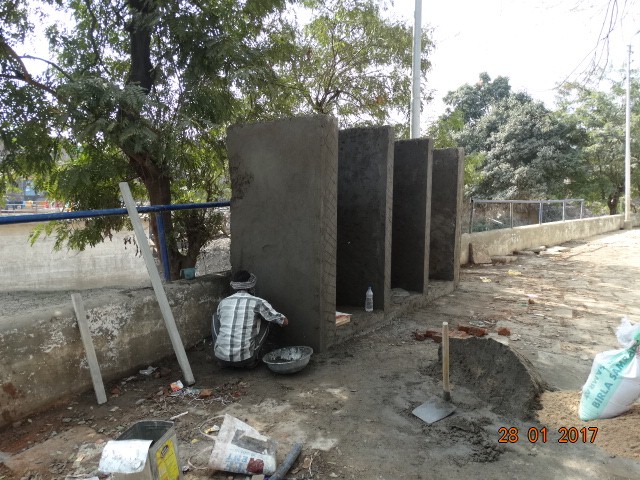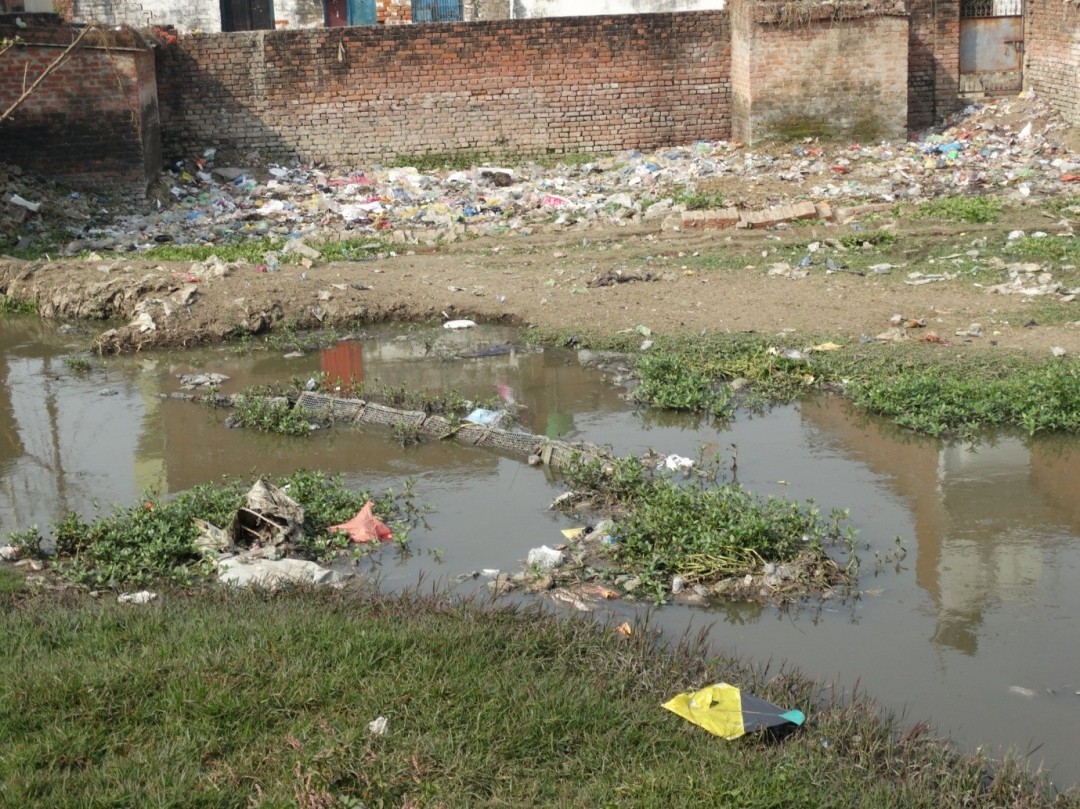Rivers as Legal Persons
Source: Economic & Politica Weekly
A Regressive Step
The
recent decision by the Uttarakhand High Court to declare the Ganga and
Yamuna rivers as “juristic persons” is skewed and based on flawed legal
reasoning. The judgment threatens to undermine years of progress made in
environmental jurisprudence and fails to serve the purposes of
environmental conservation and sustainable use of river water.
The
High Court of Uttarakhand has consecrated two Indian rivers as juristic
persons along the lines of Hindu idols, companies and the Church in a
stand-alone judgment on 20 March 2017 (Mohd Salim v State of Uttarakhand, 2017). A division bench comprising Justices Rajiv Sharma and Alok Singh declared,
Note
1 The Namami Gange Programme is run by the National Mission for Clean Ganga, which is a registered society and acts as the nodal agency responsible for the implementation of various projects to clean up and rejuvenate the river Ganga.
Cases Cited
Manoj Misra v Delhi Development Authority and Ors (2016): NGT.
Mohd Salim v State of Uttarakhand (2017): SCC OnLine, Utt, p 367.
Prosanna Kumari Debya v Golab Chand Baboo (1875): LR, IndAp, 2, p 145.
Yogendra Nath Naskar v Commission of Income Tax, Calcutta (1969): SCC, SC, 1, p 555.
The Rivers Ganga and Yamuna, all their tributaries, streams, every natural water flowing with flow continuously and intermittently of these rivers, as juristic/legal persons/living entities having the status of legal persons with all corresponding rights, duties and liabilities of a living person in order to preserve and conserve the rivers. (Paragraph 19).
The bench exercised the doctrine of parens patriae and directed that a
Ganga Management Board be constituted. It appointed the director of the
Namami Gange Programme1 and the chief secretary and
advocate general of the state of Uttarakhand as persons in loco parentis
as the “human face to protect, conserve and preserve Rivers Ganga and
Yamuna and their tributaries.” These officers have been entrusted with
the onerous task of promoting the health and well-being of both rivers.
Skewed Reasoning
The bench, while arriving at this conclusion, was ostensibly
motivated by the profound sense of faith of certain communities in the
piety of both rivers, as well as the need to protect India’s wealth of
natural resources. The rationale is lucid, as many people repose their
faith in the rivers as deities, while also being dependent on the rivers
for multifarious purposes, such as sustenance, irrigation, livelihood
and development. Further, the Indian judiciary is saddled with a sacred
duty, as the champion of the people’s rights, to protect the rights of
citizens to a wholesome environment, enjoyment of natural resources, and
their fundamental right to water. Thus, the mandate is clear; it is
imperative that the rivers be protected.
The reasoning applied by the bench is skewed and roundabout, and only
stands in that the concept of a “juristic person” is well-recognised in
legal theory. However, the bench has willy-nilly cherry-picked legal
principles and pronounced a judgment that threatens to undermine years
of progress made in environmental jurisprudence. As per the bench, the
concept of an artificial juristic personality was created in response to
the need for assigning rights and liabilities to artificial beings for
“subserving the needs and faith of society.” It has proved to be an
effective tool to look into the functioning of companies, corporate
bodies, as well as places of religious worship. Paragraphs 14 and 15 of
the judgment discuss this concept of artificial personality, where an
inanimate object, a non-natural person or an association of persons is
awarded a distinct juristic personality along with all the corresponding
rights and liabilities. This juristic person functions through a
manager or appointed guardian who is entrusted with the responsibility
of managing funds for the corpus.
It is, thus, under a well-settled principle of legal theory that
trusts, minors, hospitals, etc, are endowed with an artificial
personality. The concept is especially useful in India as it provides
for accountability and transparency of private trusts, temple boards, maths,
waqfs, etc. However, to apply it to a common pool resource like a river
is a stretch. Further, the notion that it will be of any use or
significance when applied towards conservation of a river is
questionable.
First, a river is not a deity simpliciter. A particular section of
society may repose faith, belief and worship in a river, but for others
it is only a natural resource to be utilised in an effective and
sustainable manner. There is no comparison between an idol in a temple
or a private company, and a river, which is a natural common pool
resource. The bench has cited Yogendra Nath Naskar v Commission of Income Tax, Calcutta (1969) as
a precedent where it was held that a “Hindu idol is a juristic entity
capable of holding property and of being taxed through its shebaits who
are entrusted with the possession and management of its property.”
This reasoning cannot be applied to a river as there is stark
difference between a flowing river with its many tributaries—a natural
resource that belongs to generations of people with millions of
stakeholders dependent on it for survival and sustenance—and a temple
management board. Temple boards are socio-religious trusts comprising
members nominated by both the government and community. Their aim is to
manage temples and their assets and to ensure their smooth operation in
accordance with traditional rituals and customs prescribed under
religious scriptures. Their very nature is exclusionary to
non-believers. A river board, on the other hand, as per the River Boards
Act, 1956 was envisaged as a state body designed to advise the central
government on development opportunities, and to coordinate activities
and resolve disputes pertaining to rivers. Under their mandate, the
boards were required to provide advice to the government on various
issues related to rivers. However, due to the failure of the Indian
government to constitute a river board since the act was enacted almost
50 years ago, the exact nature of a river board cannot be ascertained.
However, the secular and inclusionary nature of such a board—should one
be created—cannot be doubted.
Further, the justices have alluded to the endowment of juristic
personality on an idol that is linked with a natural person like a shebait or manager. Reference has been made to Prosanna Kumari Debya v Golab Chand Baboo (1875), which deals with the role of shebaits when an
inanimate object is consecrated as a deity so that divinity may be
attributed to it. There is a tacit direction that the members of the
Ganga Management Board will have duties and responsibilities like that
of a shebait. This is an absurd perversion of constitutional morality,
which will give birth to numerous problems between various stakeholders
in any river issue. For example, were the religious wishes of one
section of society to come into conflict with the needs of another, as
is bound to happen in a multicultural pluralistic society, it will be
difficult to assign priority to either.
Need for a Scientific Approach
Second, sustainable development and environmentalism are simply
better served through a scientific approach supported by inclusive steps
that involve people irrespective of distinctions of belief, faith,
caste and gender. Historically, Indian environmentalism did lay emphasis
on religious scriptures and texts in the 1960s, but in a rapidly
industrialising and globalised world, such an ideology is simply not
sufficient to address the problems of climate change and ecological
imbalance. The introduction of a religious narrative now, after years of
constitutional and political struggle seeking to look at conservation
through a dispassionate and scientific lens, is a regressive step.
Natural resource conservation efforts in India are already suffering
from various problems associated with activities of a religious nature,
such as pollution caused during kumbh melas, mass prayer meetings, etc.
The Art of Living case (Manoj Misra v Delhi Development Authority and Ors, 2016) is now a textbook example of the non-alignment of religious sentiments of people and ecological, environmental interests.
Third, the appointment of officers of the lone state of Uttarakhand as persons in
loco parentis for the two rivers is likely to create more problems as
future strategies for river conservation are devised. The language used
in the judgment appears to give the impression that the state of
Uttarakhand shall have the sole responsibility and associated rights for
the “promotion of health and well-being” of the rivers and their
tributaries. As one of the largest river systems in the world—flowing
through the states of Uttar Pradesh, Bihar, Jharkhand and West Bengal,
besides Uttarakhand—there are bound to be conflicts between these states
when it comes to strategies, planning, and implementation of river
rejuvenation and conservation efforts. Further, the exact contour of
duties of loco parentis, when applied to natural resources, is uncharted
territory.
Nevertheless, if the newly assigned personality to these rivers helps
conservationists jump a few hoops towards a cleaner and more
rejuvenated Ganga and Yamuna, or inspires more sentimental vigour in
society towards the environment and ecology, then it will be a welcome
decision. However, one is not hopeful, knowing that the condition of
natural resources, ecology, and biodiversity of the country are in a
shambles despite the fact that rivers and nature are culturally regarded
as maternal figures.
1 The Namami Gange Programme is run by the National Mission for Clean Ganga, which is a registered society and acts as the nodal agency responsible for the implementation of various projects to clean up and rejuvenate the river Ganga.
Cases Cited
Manoj Misra v Delhi Development Authority and Ors (2016): NGT.
Mohd Salim v State of Uttarakhand (2017): SCC OnLine, Utt, p 367.
Prosanna Kumari Debya v Golab Chand Baboo (1875): LR, IndAp, 2, p 145.
Yogendra Nath Naskar v Commission of Income Tax, Calcutta (1969): SCC, SC, 1, p 555.
**********
































